If you’re diving into the world of plants, let me introduce you to the star of the show – Begonia Conchifolia! 🌿 Say hello to the cool kid in the botanical block.
This fantastic plant is not just a tongue-twister; it’s a green beauty that’s about to become your new favorite roommate. So, what’s the hype about?

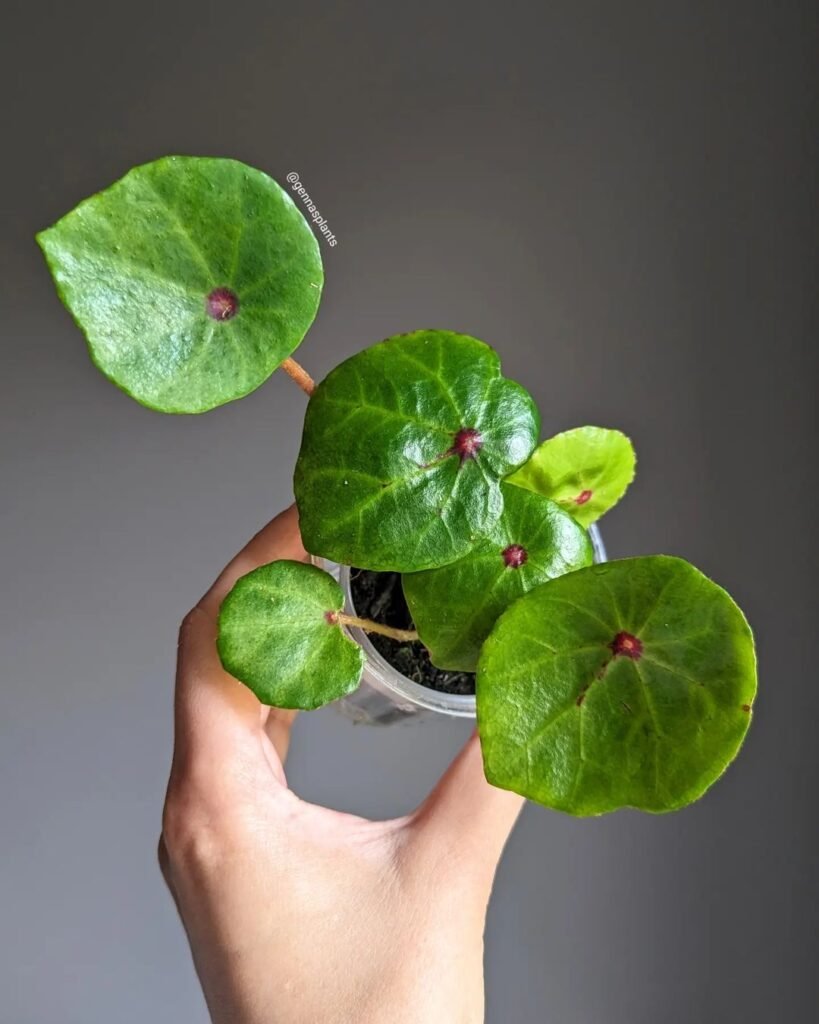
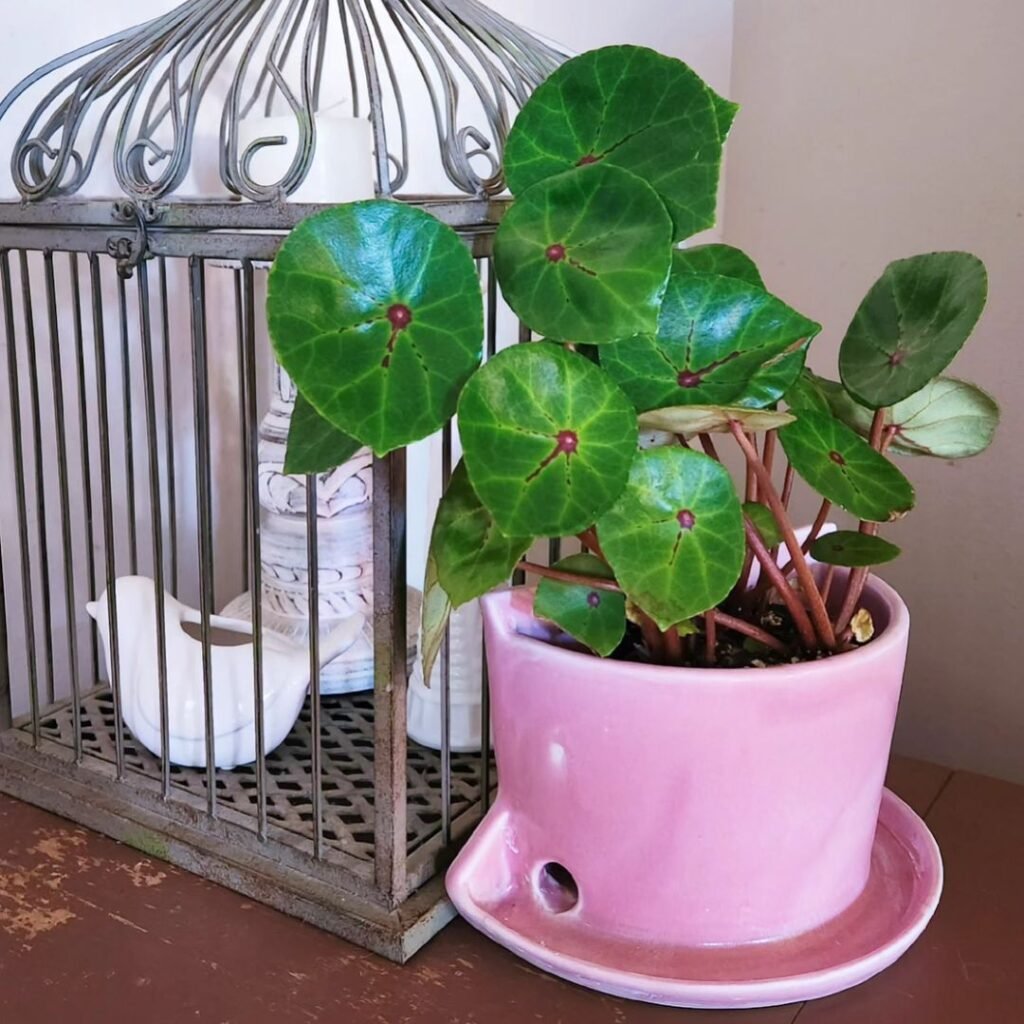
Begonia Conchifolia Care Guide Overview
| Soil | Well-draining, rich potting mix. Imagine the perfect comfy bed for your plant – that’s what this soil is. It should be able to drain water well, so your Begonia doesn’t feel like it’s stuck in a soggy marsh. |
| Watering | Keep the soil consistently moist, not soggy. It’s like finding the Goldilocks zone for watering – not too much, not too little. Let the soil dry out slightly between watering sessions, and you’ll have one happy plant. |
| Humidity | Likes higher humidity levels. If your Begonia could talk, it would ask for a tropical vacation. Keep the air around it a bit more humid, and it’ll feel like it’s chilling in its natural habitat. |
| Temperature | Warm and stable (avoid drafts). Picture this – your Begonia Conchifolia likes the cozy warmth of a tropical paradise. Keep it away from chilly drafts, and it’ll reward you with its vibrant, happy leaves. |
| Fertilizing | Feed during the growing season. Just like us, plants need a good meal. During its growing phase, offer a balanced liquid fertilizer every 2-4 weeks. It’s like giving your Begonia a nutrient-packed smoothie. |
Genus Species & Appearance
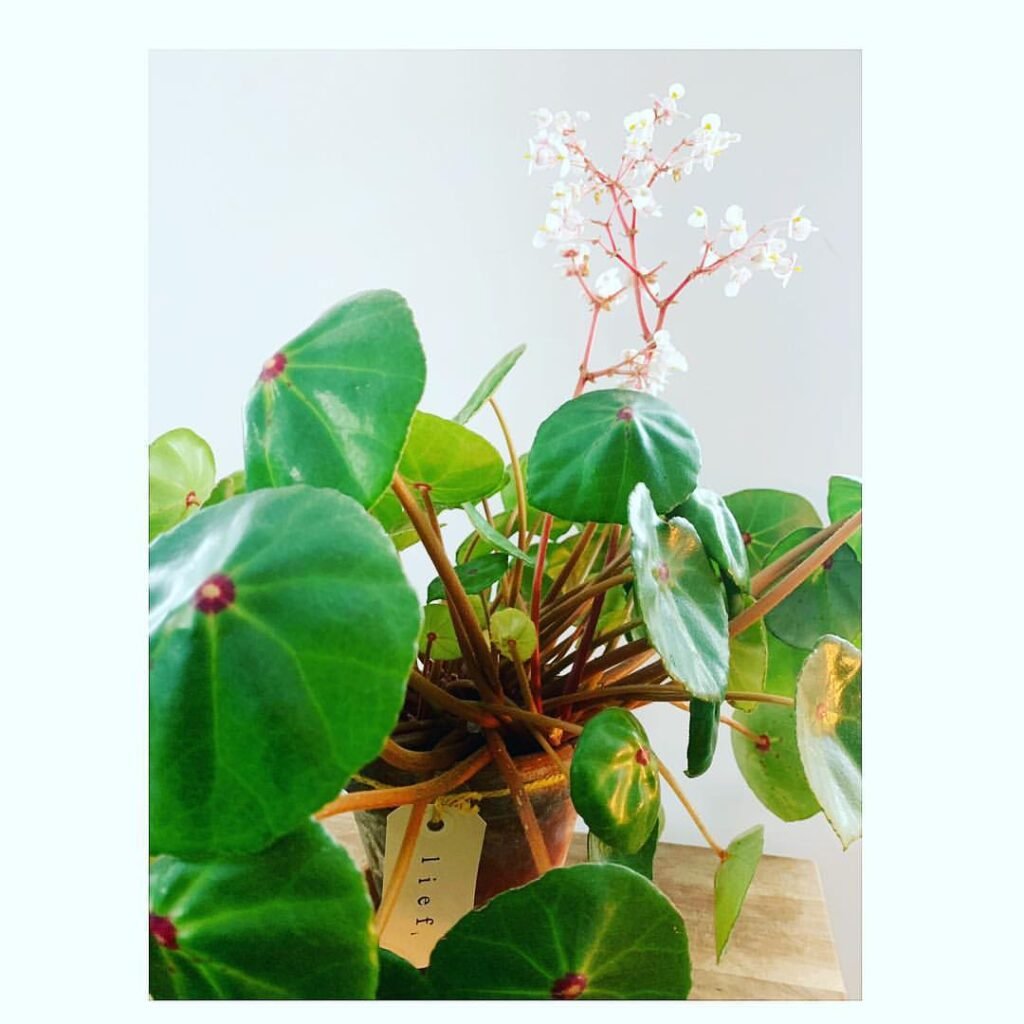
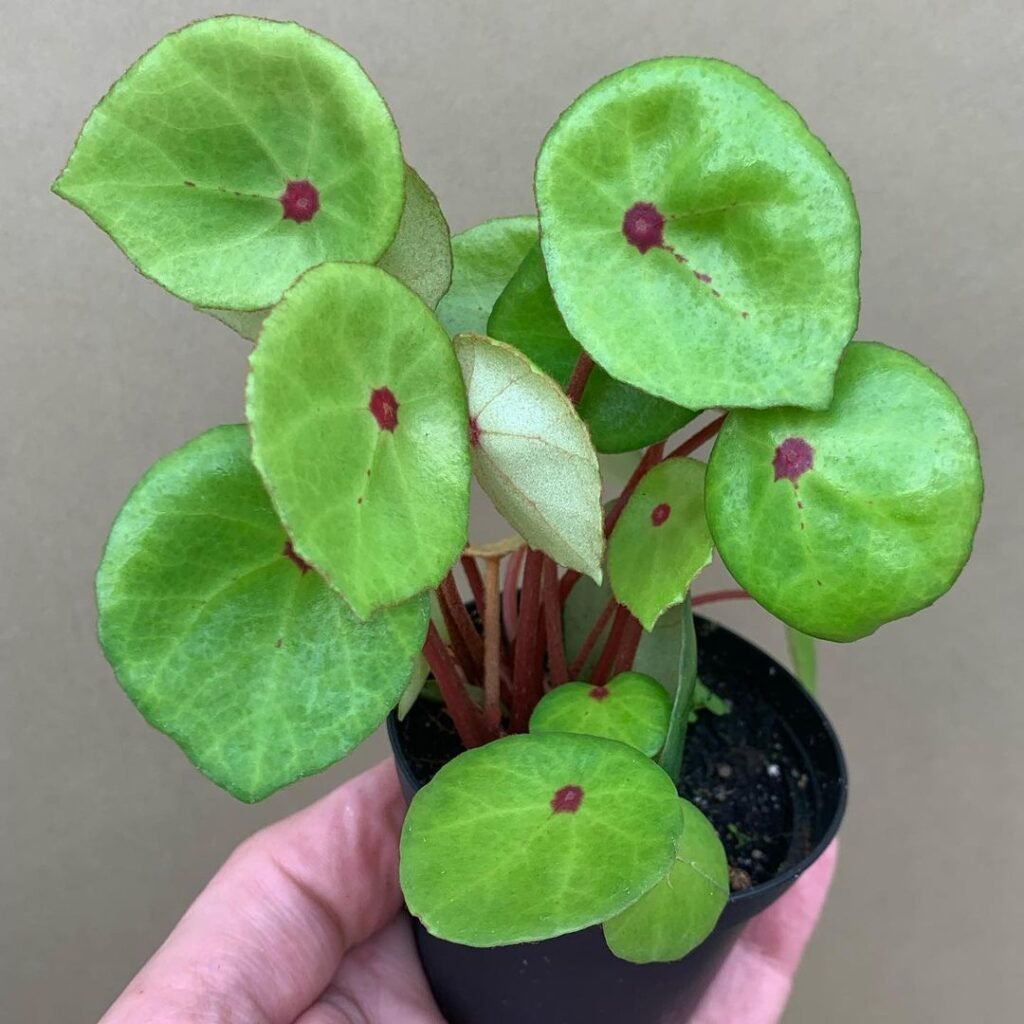
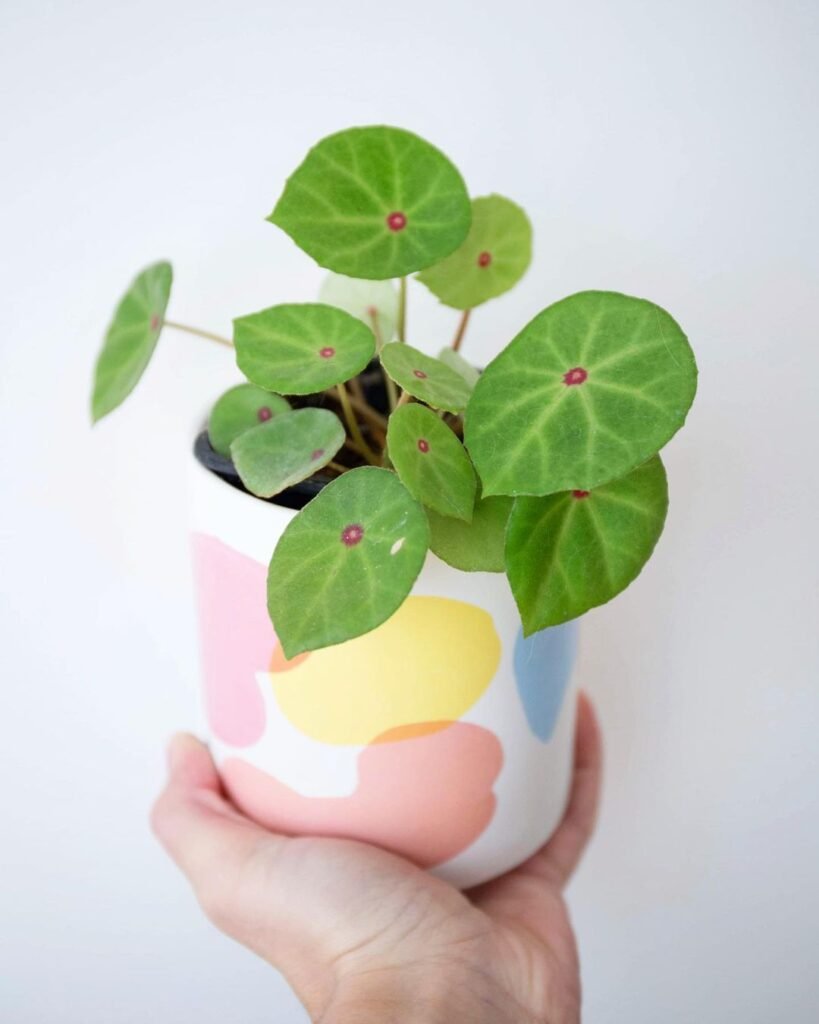
Let’s dive into the nerdy side of things, but don’t worry; it’s the cool kind of nerdy. Begonia Conchifolia belongs to the begonia family (surprise, surprise!). Its full name is Begonia rex ‘Conchifolia,’ and if you’re wondering what ‘rex’ means, it’s just Latin for ‘king.’ Yes, you read that right – the king of begonias!
Now, appearances matter, right? Imagine a begonia that decided to go all out on the fashion front. That’s Begonia Conchifolia for you! Its leaves are a spectacle, coming in various shapes, sizes, and colors. Some are like green masterpieces with silver swirls, while others flaunt splashes of pink or red. It’s basically a leafy fashion show in your living room.
Fun Fact: the name ‘Conchifolia’ is like a secret code. ‘Conchi’ means shell, and ‘folia’ means leaf. So, in plant language, it’s like saying, “Hey, I’ve got these awesome shell-like leaves!” Nature has its way of giving plants cool names, doesn’t it?
Not the plant for you? Check out my full list of 78 Types of Begonia!
Light and Soil Requirements
Now, let’s shed some light on what makes Begonia Conchifolia thrive. Light is its life force, and getting it right is like finding the perfect playlist for your mood.
Light Requirements: 🌞
Begonia Conchifolia is a sun-worshipper, but not a fan of harsh rays. Imagine it enjoying a beach day with a giant umbrella. Place it in bright, indirect light, like near an east-facing window. If it starts acting like a drama queen with scorched leaves, it’s probably getting too much sun. On the flip side, if it’s reaching for the light like a sunflower, it might need more. Strike that balance, and your Begonia will be the rockstar of your plant collection.
Now, onto the soil – the foundation of your plant’s home. It’s like the perfect mattress for a good night’s sleep.
Soil Requirements: 🏡
Begonia Conchifolia has a preference for well-draining, rich potting mix. Think of it as a soil that doesn’t hold grudges, especially against water. The roots want to breathe, not swim. Mix in some peat moss, perlite, or orchid bark to keep things light and airy. It’s like giving your plant the VIP treatment with a custom-made soil mix.
| Aspect | Bright, indirect light |
|---|---|
| Preferred Soil Type | Well-draining, rich potting mix |
| Additional Tips | Rotate your Begonia occasionally to ensure all sides get their fair share of light, promoting even growth. |
Remember, this dynamic duo of light and soil is the secret sauce to a happy Begonia Conchifolia. Think of it as the plant version of a perfect day at the beach – sun-kissed and surrounded by good vibes.
Watering
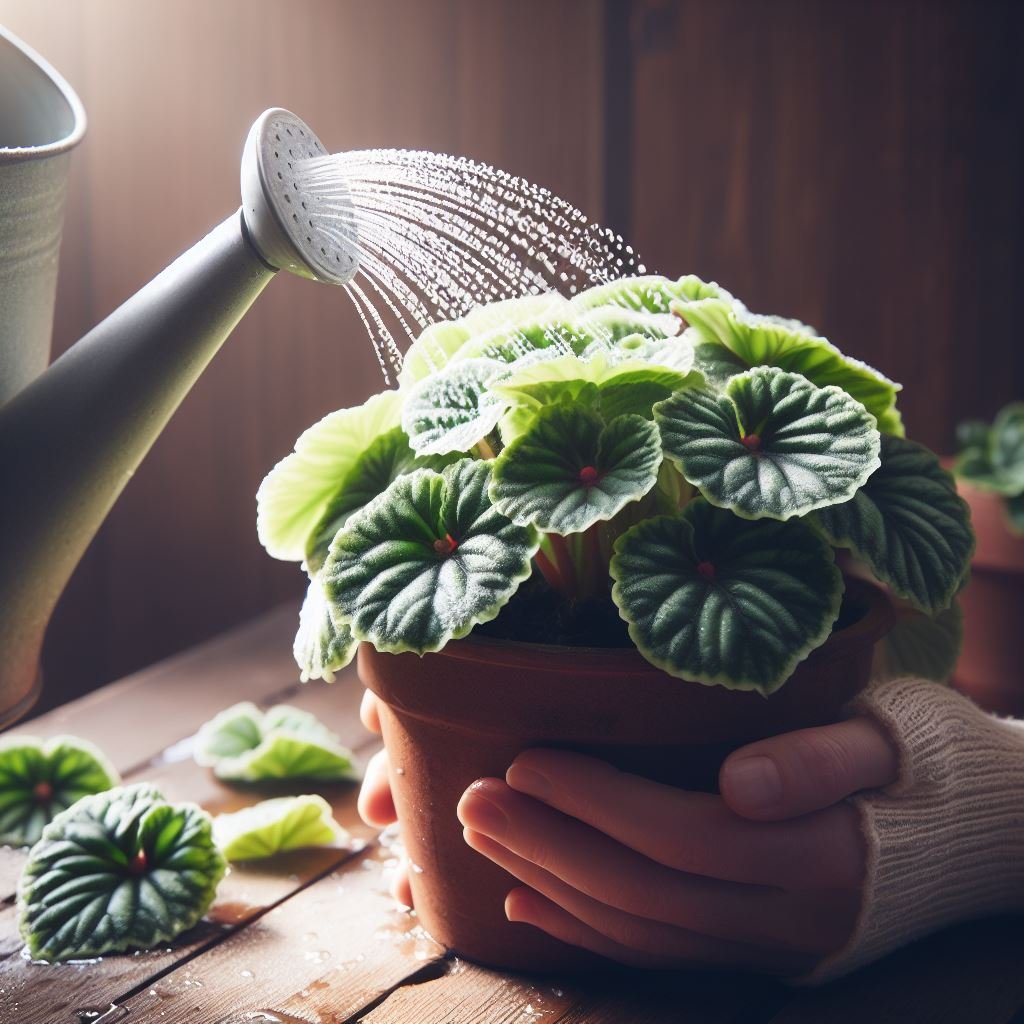
Now, let’s talk about the liquid gold that keeps your Begonia Conchifolia hydrated – watering. This is where you become the plant’s personal weather forecaster, predicting when it’s time for a drink.
Watering Guidelines: 💧
Your Begonia likes to keep things moist but not soggy. It’s like finding the right balance between a desert and a swamp – a happy medium. Check the top inch of the soil; if it feels dry, it’s showtime.
Water thoroughly, letting the excess drain out. But, and it’s a big but, don’t let your Begonia sit in a puddle. That’s a recipe for root rot, and your plant won’t be dancing in joy.
Now, for the insider tips:
- Humidity Heroes: Begonia Conchifolia loves a bit of humidity. If your home is drier than a desert, consider placing a tray of water near your plant or misting it occasionally. Your Begonia will thank you with lush, vibrant leaves.
- Water Quality Matters: Use room-temperature water and avoid extremes. Begonias are like the Goldilocks of hydration – not too hot, not too cold, just right.
- Seasonal Shifts: Adjust your watering routine with the seasons. In winter, when your plant is taking it easy, cut back on watering. Come spring and summer, it’s showtime, and your Begonia might need a bit more attention.
Humidity and Temperature
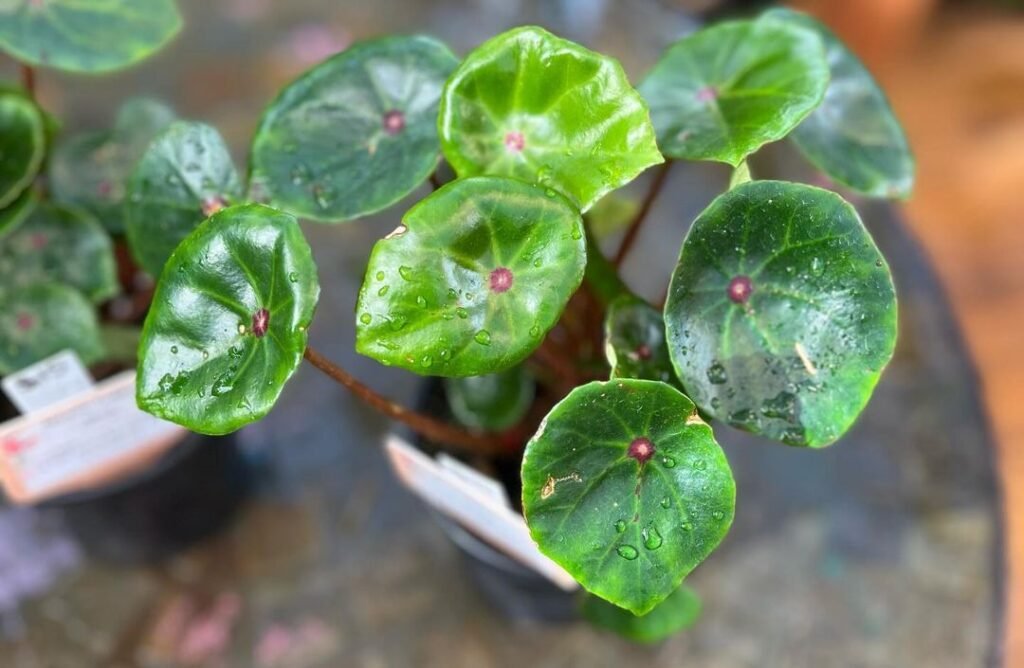
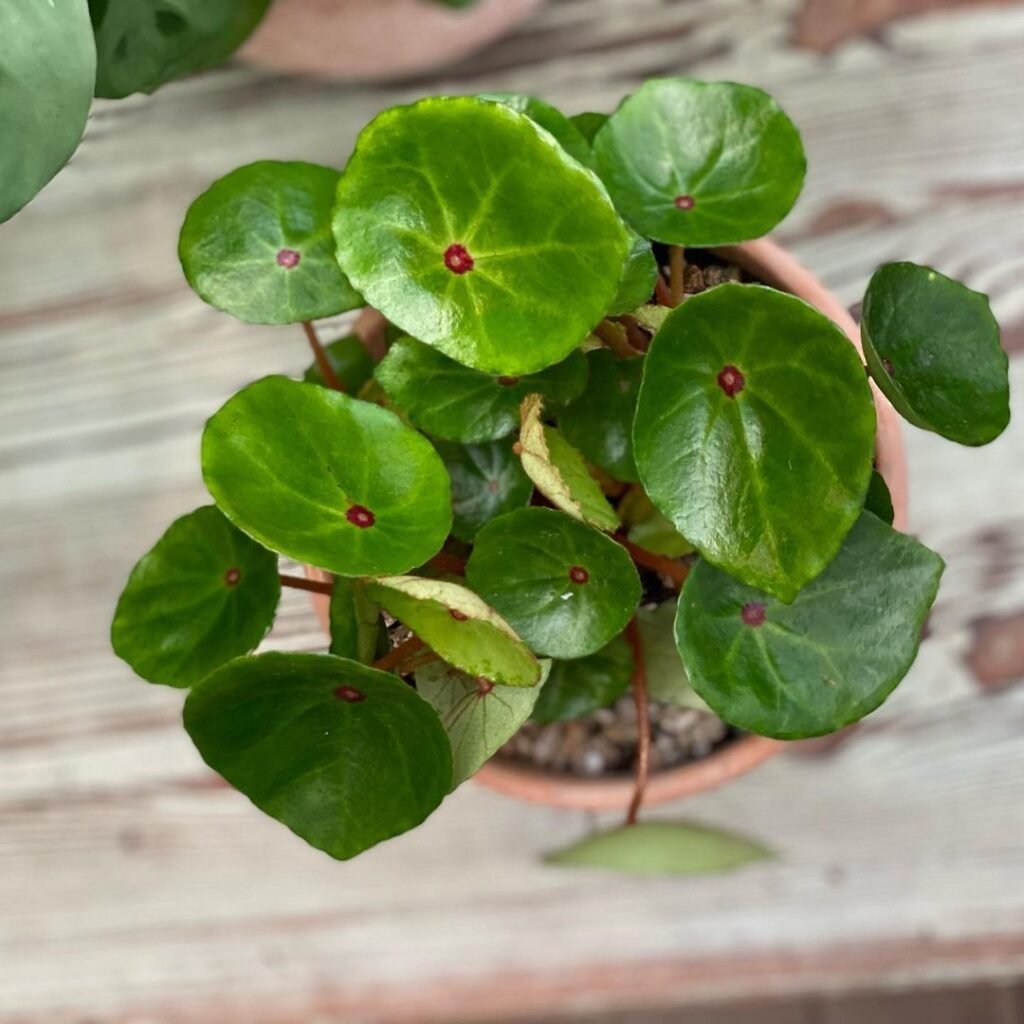
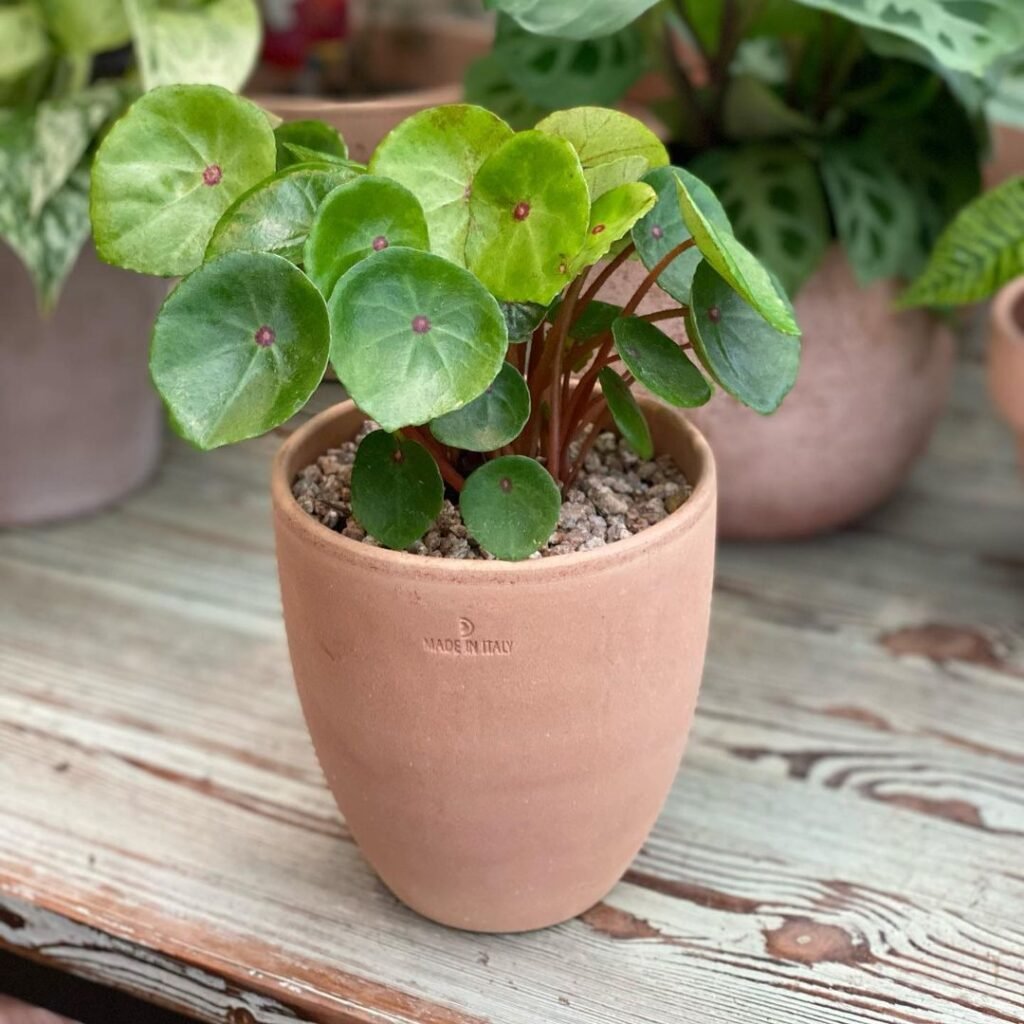
Now, let’s talk about the spa treatment for your Begonia Conchifolia – the perfect blend of humidity and temperature. It’s like setting the mood for a cozy night in.
Humidity Haven: 💨
Imagine your Begonia Conchifolia as a tropical diva that loves a bit of moisture in the air. Maintain humidity levels between 50% and 60%. If your home is drier than a desert, consider placing a tray of water near your plant or misting it occasionally. It’s like giving your plant a mini vacation to the rainforest. Your Begonia will reward you with lush, happy leaves.
| Humidity Levels | 50% – 60% for optimal growth |
|---|---|
| Tips | Consider using a humidifier or placing a tray filled with water and pebbles near your plant. |
Temperature Tango: 🌡️
Begonia Conchifolia likes things warm and stable. Think of it as a tropical beach bum – no extreme temperature changes, please! Keep your thermostat between 65°F to 75°F (18°C to 24°C). Avoid drafts like your plant’s life depends on it because, well, it kinda does. It’s like creating a cozy corner for your Begonia to relax and enjoy life.
Care Tip: During winter, when indoor heating can make the air drier than usual, consider placing a humidifier near your plant. It’s like a moisture-boosting hug for your leafy friend, ensuring it feels pampered all year round.
Maintaining the right balance of humidity and temperature is like turning your home into a botanical paradise for your Begonia Conchifolia. So, set the mood, and watch your plant flourish!
Fertilizing
Now, let’s talk about feeding your Begonia Conchifolia – it’s time for the fertilizing fiesta! Think of it as the plant version of a nutrient-packed smoothie to keep your green buddy happy and thriving.
Feeding Schedule: 🌿
Begonia Conchifolia is a bit like a plant gym-goer. It appreciates a good meal during its growing season, which usually spans from spring through early fall. Here’s the game plan: feed your plant every 2-4 weeks with a balanced liquid fertilizer. It’s like giving your Begonia the VIP treatment – all the nutrients it needs to show off those vibrant leaves.
Application Tips: 💡
- Dilute the fertilizer to half the recommended strength. Your Begonia is all about balance, and too much of a good thing can be overwhelming.
- Apply the fertilizer when the soil is already moist. It’s like serving a drink after a workout – your Begonia will absorb the nutrients better.
Care Tip: If your Begonia Conchifolia isn’t showing much growth, you can add a bit more fertilizer, but always in moderation. It’s like encouraging your plant to reach its full potential without overwhelming it.
Pruning and Shaping
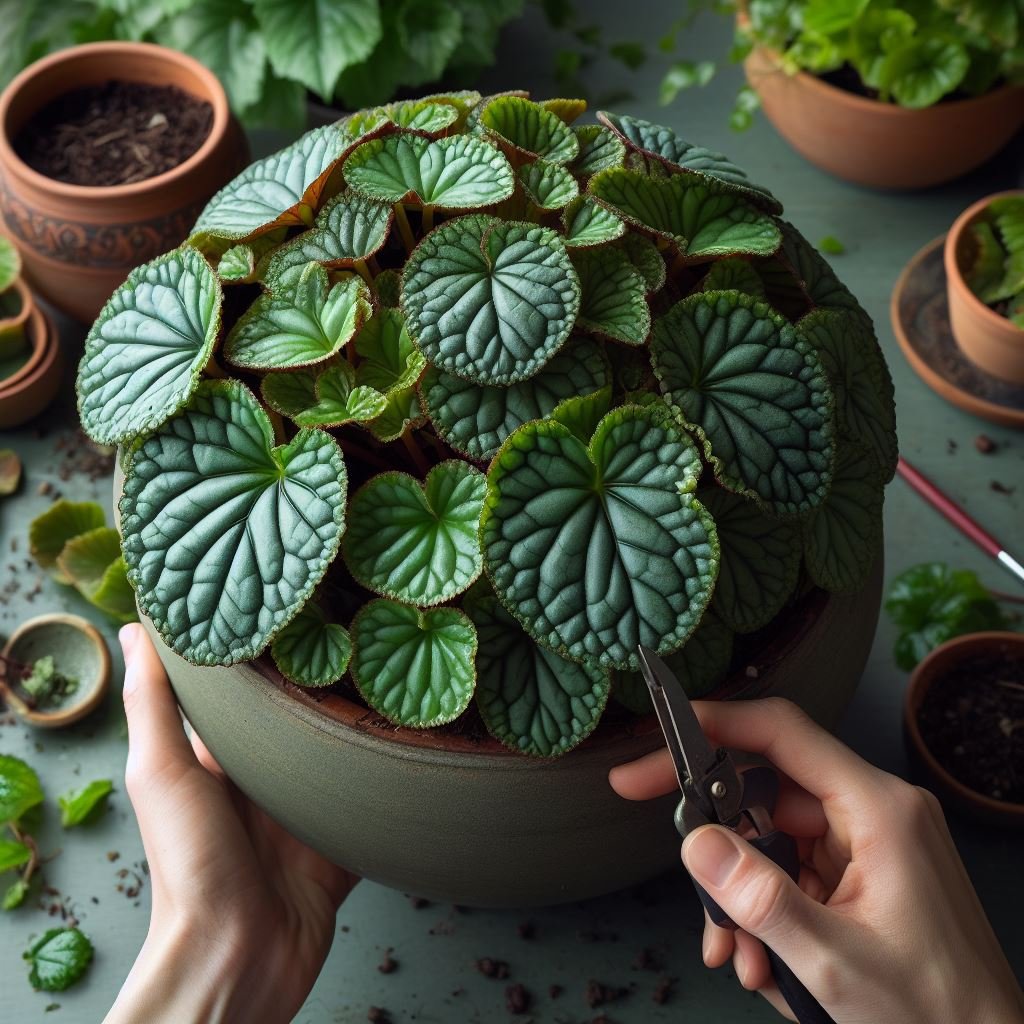
Time to get out your virtual gardening shears because we’re delving into the world of pruning and shaping your Begonia Conchifolia. It’s like giving your plant a stylish haircut – shaping its leafy locks for maximum beauty.
Why Prune? 🌱
Pruning isn’t just about aesthetics; it’s about the health and vitality of your Begonia Conchifolia. Regular pruning helps remove dead or yellowing leaves, improving air circulation and preventing the growth of pesky pests. Think of it as your plant’s spa day, a chance for it to rejuvenate and flourish.
Pruning Techniques: ✂️
- Leaf Removal: Use clean, sharp scissors or pruning shears to remove any damaged or discolored leaves. Make clean cuts close to the stem to encourage new growth.
- Size Control: If your Begonia is starting to resemble a leafy jungle, prune back some of the older stems to encourage branching. This promotes a bushier, more compact shape.
- Shaping: Get creative! While Begonia Conchifolia has its own wild charm, you can shape it to your liking. Prune to encourage a certain form or remove unwanted stems.
| Pruning Task | When to Perform | Tools Needed |
|---|---|---|
| Leaf Removal | As needed throughout the year | Clean, sharp scissors or pruning shears |
| Size Control | Spring or early summer | Pruning shears |
| Shaping | Anytime, but preferably in spring | Pruning shears |
Care Tip: Always clean your tools before and after pruning to prevent the spread of diseases. It’s like practicing good hygiene for your plant’s well-being.
Remember, pruning is an art, and you’re the artist. So, sculpt away and watch your Begonia Conchifolia transform into a leafy masterpiece!
Propagation and Repotting
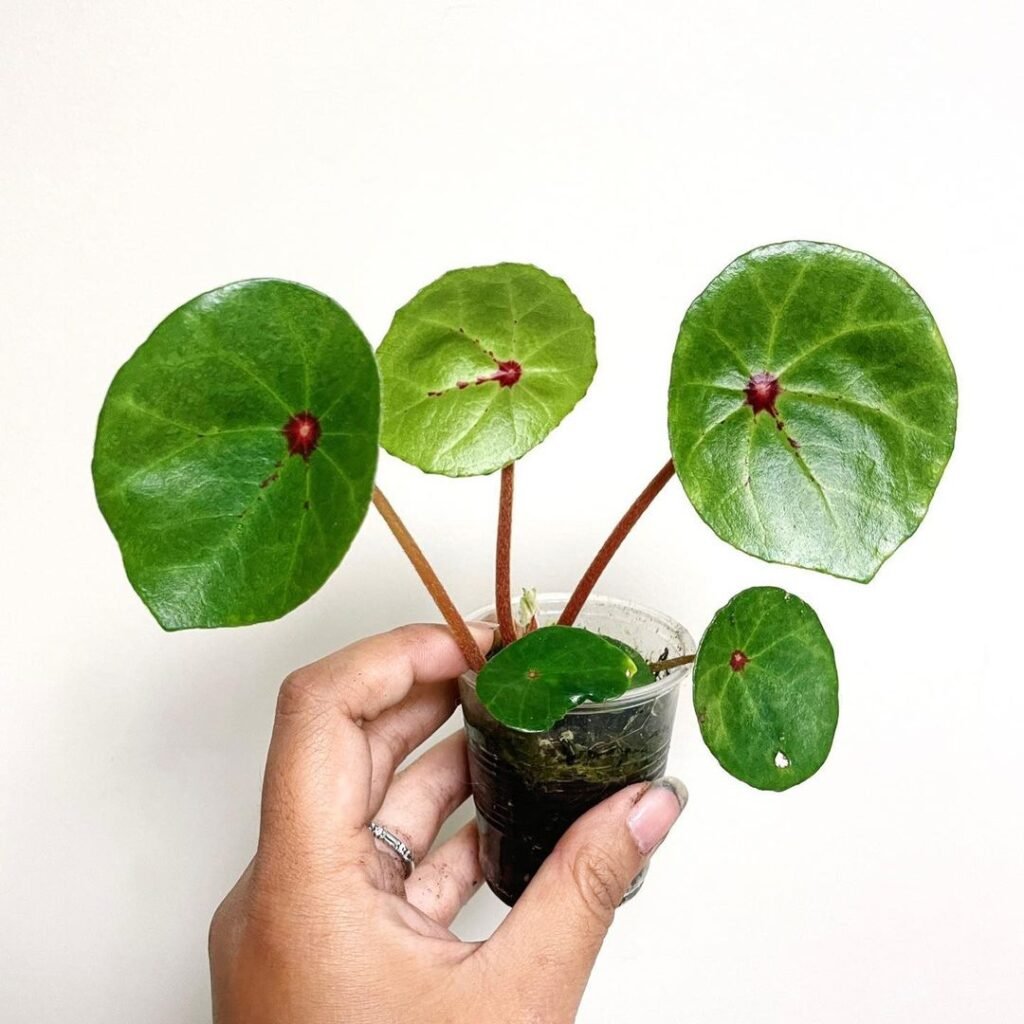
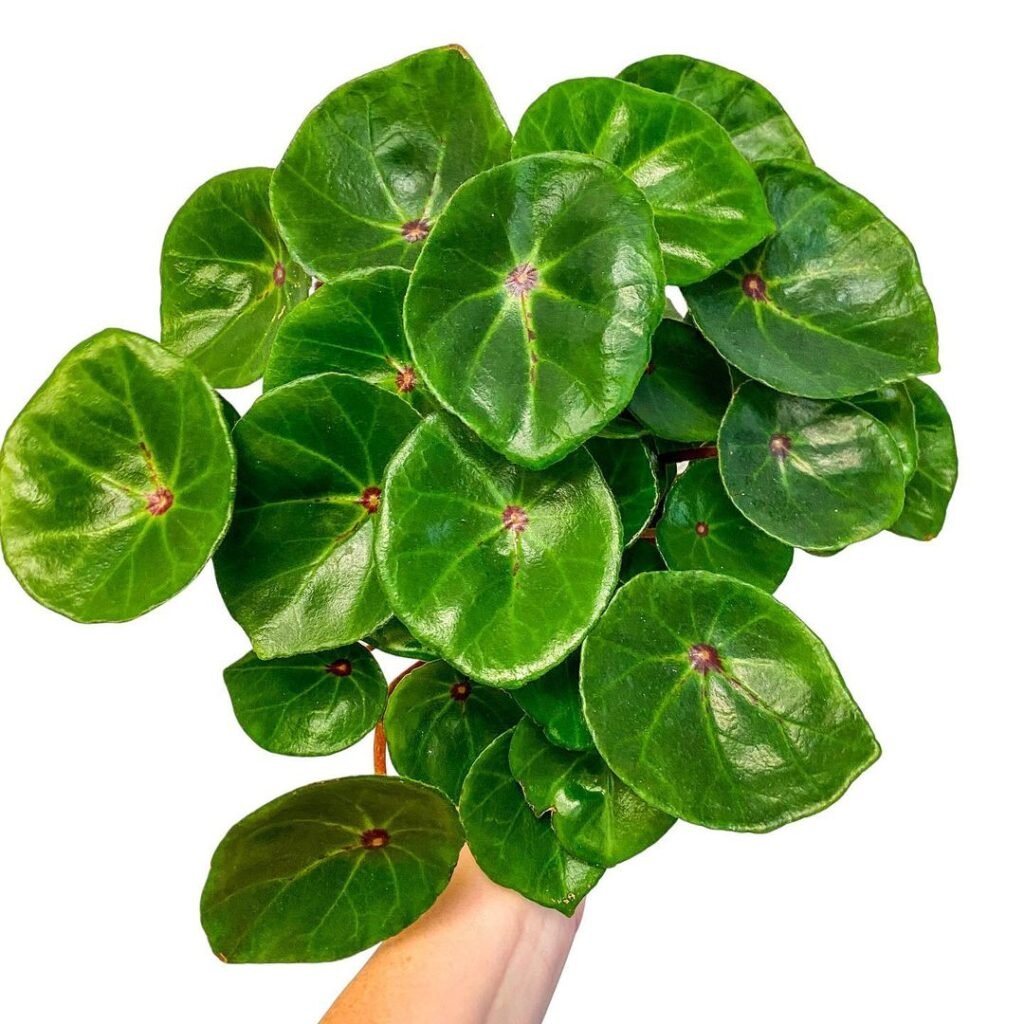
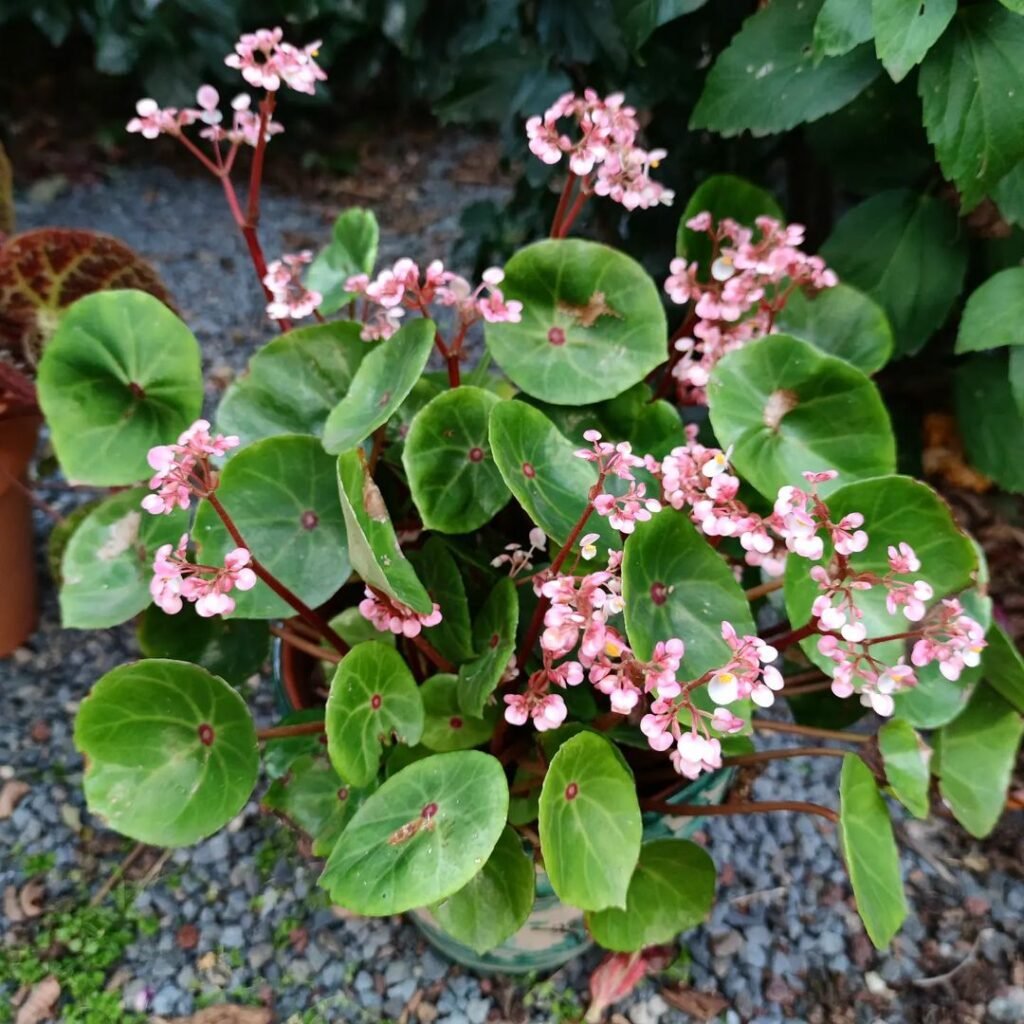
Time to put on your plant scientist hat because we’re diving into the fascinating world of propagation and repotting. It’s like giving your Begonia Conchifolia a chance to multiply and refresh its living space.
Why Propagate? 🌱
Propagation is the plant’s way of saying, “Let’s make more of me!” It’s a fantastic way to expand your Begonia family or share the leafy love with friends. Plus, it’s a great solution if your plant has outgrown its pot or needs a fresh start.
Propagation Methods: 🌱
- Stem Cuttings: Choose a healthy stem with a few leaves and snip it just below a leaf node. Remove lower leaves, dip the cut end in rooting hormone (if available), and plant in a new pot with fresh soil.
- Division: If your Begonia has multiple stems, you can carefully divide it during repotting. Ensure each division has roots attached and plant them in separate pots.
| Propagation Method | Best Time | Tools/Supplies Needed |
|---|---|---|
| Stem Cuttings | Spring or early summer | Pruning shears, rooting hormone (optional), new pot, fresh soil |
| Division | During repotting | Pruning shears, new pots, fresh soil |
Care Tip: When propagating, make sure your tools are sharp and clean to minimize stress on the parent plant and give the newbies the best start in life.
Repotting: 🏡
Begonia Conchifolia, like any free spirit, enjoys a change of scenery every now and then. Repotting is your way of offering it a fresh start, providing new nutrients and space to spread its roots.
When to Repot: 📆
- Every 1-2 Years: Begonia Conchifolia doesn’t like feeling cramped. Repot it every couple of years, preferably in spring or early summer when it’s gearing up for growth.
Care Tip: If your Begonia has outgrown its pot, go for a container that’s 1-2 inches larger in diameter. It’s like moving from a cozy studio to a spacious apartment – room to stretch and thrive!
Seasonal Care
Let’s navigate through the changing seasons with the utmost care for your Begonia Conchifolia. Seasonal care is like adjusting the thermostat for your plant, ensuring it stays comfortable and happy year-round.
Spring Awakening: 🌸
As the days get longer and nature comes to life, your Begonia Conchifolia is ready to stretch and shine. Here’s your spring to-do list:
- Inspect and Prune: Examine your plant for winter wear and tear. Prune any dead or damaged leaves to make way for fresh growth.
- Fertilize: Provide a gentle boost with a balanced fertilizer. Think of it as breakfast in bed – your plant waking up to a nutrient-rich feast.
- Repotting: If your Begonia has outgrown its space, consider repotting in spring. Give it a new home with fresh soil, like a plant spa day.
Summer Splendor: ☀️
Summer is the season of growth and vibrancy for Begonia Conchifolia. Give it the care it deserves during these warm months:
- Hydration Heroics: Keep the soil consistently moist. It’s like a cool drink on a hot day – your Begonia will thank you for the refreshment.
- Light Control: Shield your plant from harsh midday sun. Think of it as putting on sunglasses – protecting your Begonia’s delicate leaves.
- Watch for Pests: Keep an eye out for unwanted visitors like spider mites or aphids. If detected, take action promptly to protect your leafy friend.
Fall Transition: 🍂
As temperatures cool down, your Begonia Conchifolia gears up for a more relaxed period. Show it some love with these autumnal tips:
- Reduce Watering: Ease up on watering as the plant’s growth slows down. It’s like adjusting your workout routine for the changing season.
- Limit Fertilizing: Taper off on fertilizing. Your Begonia is winding down, and too many nutrients now could lead to overstimulation.
- Prepare for Indoors: As temperatures drop, consider bringing your Begonia indoors. Think of it as creating a cozy winter nook for your plant.
Winter Dormancy: ❄️
Winter is a time for your Begonia Conchifolia to take it easy. Provide the care it needs during this dormant period:
- Reduce Watering Further: Cut back on watering. The plant is in rest mode, and soggy soil can lead to issues like root rot.
- Monitor Light: Ensure your Begonia gets bright, indirect light. It’s like a winter sunbath – a gentle exposure to keep it from getting too chilly.
- Inspect for Pests: Check for any pests that might have hitchhiked indoors. Early detection prevents potential infestations.
| Season | Care Tasks |
|---|---|
| Spring | Inspect and prune, fertilize, consider repotting |
| Summer | Keep soil consistently moist, control light exposure, watch for pests |
| Fall | Reduce watering, limit fertilizing, prepare for indoors |
| Winter | Further reduce watering, monitor light exposure, inspect for pests |
Care Tip: Adapt your care routine based on your specific climate and indoor conditions. It’s like customizing a playlist – creating the perfect harmony for your Begonia Conchifolia.
Companion Plants
Your Begonia Conchifolia doesn’t have to go solo – it’s time to explore the world of companion plants. Like choosing the right friends, selecting suitable plant pals enhances the overall vibe of your green space.
Complementary Companions: 🌿
- Ferns: Pair your Begonia with ferns for a foliage fiesta. The delicate fronds complement the bold leaves of Begonia Conchifolia.
- Calathea: Introduce a touch of drama with Calathea. Their unique leaf patterns create a stunning contrast, turning your space into a leafy art gallery.
- Peperomia: Opt for Peperomia as a low-maintenance buddy. Their compact size and varied leaf shapes add visual interest without overshadowing your Begonia.
| Companion Plant | Attributes |
|---|---|
| Ferns | Delicate fronds, complements Begonia’s bold leaves |
| Calathea | Unique leaf patterns, creates stunning contrast |
| Peperomia | Compact size, varied leaf shapes, low-maintenance |
Care Tip: Consider the specific care needs of each companion plant. It’s like ensuring your plant squad enjoys a harmonious coexistence, each thriving in its unique way. With the right companions, your Begonia Conchifolia will be the star of a botanical ensemble! 🌟
If you’re thinking of extending your begonia plant family, I recommend reading up on begonia burkillii and begonia natunaensis. They both would make great additions to your squad!
Pest Control Tips
Guarding your Begonia Conchifolia against uninvited guests is crucial for its well-being. Let’s dive into effective pest control tips, ensuring your leafy friend remains a thriving oasis rather than a pest playground.
Identifying Common Pests: 🐜
Equip yourself with knowledge about potential intruders:
- Spider Mites: These tiny arachnids can create fine webs on your plant, causing leaves to yellow and drop.
- Aphids: Small, soft-bodied insects that love to suck on plant sap, leaving behind a sticky residue.
- Mealybugs: Cottony, white insects that congregate on stems and leaf joints, sapping your plant’s energy.
Natural Remedies: 🌱
Embrace eco-friendly solutions to keep pests at bay:
- Neem Oil: A hero in pest control, neem oil disrupts the feeding and reproductive cycles of many pests.
- Insecticidal Soap: A gentle option, it suffocates soft-bodied pests like aphids without harming your Begonia.
- Beneficial Insects: Introduce nature’s warriors, like ladybugs or predatory mites, to feast on the invaders.
Tip: Regularly inspect the undersides of leaves and stem joints for early pest detection. It’s like patrolling your plant’s fortress against potential invaders.
Reviving a Sick or Wilting Begonia Conchifolia
No need to panic if your Begonia Conchifolia is looking under the weather. Let’s embark on a journey of reviving a sick or wilting plant, nursing it back to its green glory.
Identifying the Issue: 🌿
Play plant detective to diagnose the problem:
- Overwatering: Are the leaves yellow and drooping? You might be drowning your Begonia.
- Underwatering: If the soil is dry and the leaves are crispy, your plant is thirsty.
- Pests: Check for the telltale signs mentioned in the pest control tips section.
Emergency Care Steps: 🚑
Take immediate action to save your Begonia:
- Assess the Roots: Gently remove the plant from its pot and inspect the roots. Trim any mushy or rotting parts.
- Adjust Watering: If overwatered, allow the soil to dry before rehydrating. For underwatering, give your Begonia a thorough drink.
- Isolate from Companions: Separate your sick Begonia from other plants to prevent the issue from spreading.
Tip: After repotting, place your Begonia in a shaded area for a few days to reduce stress and aid recovery. It’s like providing a quiet retreat for healing.
Conclusion
Congratulations on mastering the art of caring for your Begonia Conchifolia! By now, you’ve become a green-thumbed expert, navigating the intricate dance of light, water, and nutrients to keep your plant thriving.
Final Thoughts: 🌟
Remember that every leaf tells a story of care and attention. Your Begonia Conchifolia, with its vibrant foliage and unique charm, is more than a plant – it’s a companion on your botanical adventure.
As you apply the tips and tricks outlined in this guide, don’t forget to observe and connect with your Begonia. Each new leaf is a testament to your nurturing efforts. Embrace the joys of plant parenthood, and may your Begonia Conchifolia continue to flourish under your green care!
FAQs
How often should I water my Begonia Conchifolia?
Watering frequency depends on various factors, including environmental conditions and the type of potting mix. As a general rule, allow the top inch of soil to dry before watering. Stick your finger into the soil – if it feels dry, it’s time to water. Be cautious not to overwater, as Begonia Conchifolia prefers slightly moist conditions.
Can Begonia Conchifolia tolerate direct sunlight?
Begonia Conchifolia thrives in bright, indirect light. While it can tolerate some morning sunlight, it’s best to shield it from intense afternoon sun. Too much direct sunlight can scorch the delicate leaves. Consider placing your Begonia near a window with filtered sunlight or providing light shade if grown outdoors.
How do I propagate Begonia Conchifolia?
Propagation is an exciting journey to create new Begonia Conchifolia plants. The most common method is through stem cuttings. Select a healthy, non-flowering stem, cut it just below a node, and place it in a pot with well-draining soil. Keep the soil consistently moist, and roots should develop in a few weeks. Once roots are established, you can transplant the new plant into its own container.
What is the ideal temperature range for Begonia Conchifolia?
Begonia Conchifolia prefers a warm and stable environment. The ideal temperature range is between 65°F to 75°F (18°C to 24°C). Avoid exposing the plant to temperatures below 50°F (10°C) and sudden temperature fluctuations. Protect it from drafts and cold windows during the winter months.
Are there any specific diseases that affect Begonia Conchifolia?
While Begonia Conchifolia is relatively hardy, it can be susceptible to issues like powdery mildew or fungal infections, especially in humid conditions. Ensure good air circulation around the plant, avoid overhead watering, and promptly remove any affected leaves. Using well-draining soil and maintaining proper watering practices can help prevent common diseases.

Writer/Green Thumb/Explorer – Rooted deep in the rich soils of Devon, I’ve cultivated a vast expertise in plant care, helping greenery thrive in homes across the UK. When I’m not crafting detailed plant care guides, I’m journeying through the lush landscapes of the West Country, unearthing nature’s secrets and sharing them with fellow plant enthusiasts. Every leaf has a story, and I’m here to tell it.





